Mobilized peripheral blood stem cell apheresis via Hickman catheter

These data indicate the reliable feasibility and efficacy of mobilized apheresis via an indwelling Hickman catheter” Doberschuetz et al (2-19). Abstract: BACKGROUND: Autologous stem cell transplantation remains an integral treatment tool for certain childhood malignancies. In children, a central venous catheter is typically necessary to provide adequate flow rates for preparative apheresis. In this study, […]
Impact of a dedicated nursing team on central line-related complications

To evaluate the impact of a dedicated nursing team on central line insertion success and catheter-related complications” Levit et al (2019). Abstract: Aim: To evaluate the impact of a dedicated nursing team on central line insertion success and catheter-related complications. Methods: Five nurses were trained in central line insertion and maintenance practices and replaced a […]
Efficacy and safety of EMLA in infants <3 months of age
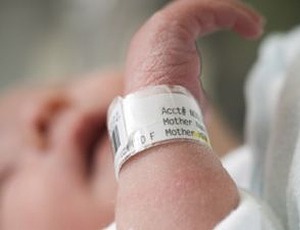
To determine the efficacy and safety of EMLA in infants
Elimination of lancet-related needlestick injuries using a safety-engineered lancet

The lancet-related NSIs may be eliminated to zero incidence using a SED lancet with effective sharp injury protection and reuse prevention features” An et al (2018). Abstract: BACKGROUND: Lancet-related needlestick injuries (NSIs) occur steadily in clinical practices. Safety-engineered devices (SEDs) can systematically reduce NSIs. However, the use of SEDs is not active and no study […]
Veinplicity versus heat treatment for vein dilation
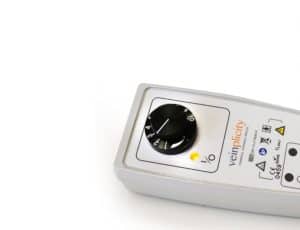
Veinplicity applies mild electrical stimulation to forearm veins to aid vessel dilation. To assess this new technique, we compared its effect on the veins to that of standard heat treatment” Barton (2019). Abstract: BACKGROUND: Peripheral intravenous cannulation is one of the most common invasive procedures for hospitalised patients. Patients with difficult venous access require special […]
Distraction using buzzy or handheld computers during venipuncture

The aim of this study was to investigate the effectiveness of 2 analgesic strategies for venipuncture in children in a specific setting like a blood-drawing center” Cozzi et al (2018). Abstract: OBJECTIVES: Venipuncture is one of the most frequently performed painful procedures in children. The aim of this study was to investigate the effectiveness of […]
Improved visualization of PICC on chest radiographs of neonates
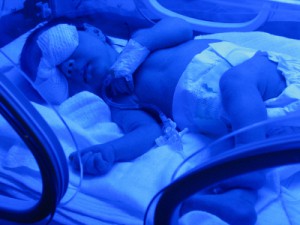
The aim of this study is to evaluate the ability of Fractional Multiscale image Processing (FMP) to detect PICC tips on the digital chest radiographs of neonates” Hammon et al (2019). Abstract: BACKGROUND: Peripherally inserted central catheters (PICCs) provide secure intravenous access for the delivery of life-sustaining medications and nutrition. They are commonly used in […]
PICC insertion with intracavitary ECG

Ultrasound-guided venipuncture and tip location by intracavitary electrocardiogram have many advantages during the insertion of peripherally inserted central catheters, both in terms of safety and cost-effectiveness” Yin et al (2018). Abstract: INTRODUCTION: Ultrasound-guided venipuncture and tip location by intracavitary electrocardiogram have many advantages during the insertion of peripherally inserted central catheters, both in terms of […]
Bundles to reduce catheter-associated bloodstream infections in neonates

This systematic survey includes a total of 27 studies published between 2002 and 2016 on the benefit of preventive bundles for the prevention of central-line associated bloodstream infections (CLABSI) in neonatal intensive care” Schmid et al (2018). Abstract: This systematic survey includes a total of 27 studies published between 2002 and 2016 on the benefit […]
Risk factors and microbial profile of CLABSI

The aim of the study is to improve the safety of patients with central venous catheter in National Heart Institute (NHI) medical cardiac care units” Khalil and Azqul (2018). Abstract: INTRODUCTION: Catheter related blood stream infection (CRBSI) is the main complication of central venous catheter (CVC) use. The aim of the study is to improve […]
Examples of complex CLABSI patient scenarios

This case study is part of a series centered on the Centers for Disease Control and Prevention/National Healthcare Safety Network (NHSN) health care-associated infection surveillance definitions” Puckett et al (2018). Abstract: This case study is part of a series centered on the Centers for Disease Control and Prevention/National Healthcare Safety Network (NHSN) health care-associated infection […]
Risk factors of peripheral intravenous cannula-induced complications

To determine the incidence, severity and risk factors of peripheral intravenous cannula-induced complications” Simin et al (2018). Abstract: AIMS AND OBJECTIVES: To determine the incidence, severity and risk factors of peripheral intravenous cannula-induced complications. BACKGROUND: Peripheral venous cannulation in hospitalized patients may cause complications such as phlebitis, infiltration, occlusion and dislodgement. A review of the […]
Symptomatic venous thromboembolism associated with peripherally inserted central catheters

PICC-VTE was associated with a worse survival outcome in nonmetastatic NPC patients. A prospective randomized clinical trial is required to verify the results” Liang et al (2018). Abstract: BACKGROUND: Despite increasing use, symptomatic venous thromboembolism (VTE) associated with peripherally inserted central catheter (PICC) is a common complication in nonmetastatic nasopharyngeal carcinoma (NPC) patients. METHODS: A […]
Predicting catheter-related bloodstream infection in severe burn injury patients

To investigate the characteristics of early catheter-related bloodstream infection (CRBSI) in severe burn injury patients induced by a massive aluminum dust explosion” Zhou et al (2018). Abstract: OBJECTIVE: To investigate the characteristics of early catheter-related bloodstream infection (CRBSI) in severe burn injury patients induced by a massive aluminum dust explosion. METHODS: Sixty-eight severe burn injury […]
Inhibition of biofilm formation by a novel intravenous catheter material

Using a novel in vitro percutaneous catheter insertion model, ChronoFlex C with BioGUARD is proven to significantly inhibit bacterial attachment and biofilm formation as compared with a commonly used polyurethane catheter material” Pathak et al (2018). Abstract: INTRODUCTION: Despite sterile barrier precautions and vigorous skin antisepsis, percutaneous insertion of intravenous catheters has been shown to […]
Review of vascular access for hemodialysis
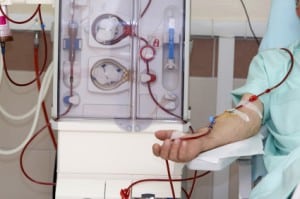
A well-functioning vascular access is a mainstay to perform an efficient hemodialysis procedure, which directly affects the quality of life in hemodialysis patients” Dinh and Nguyen (2018). Abstract: A well-functioning vascular access is a mainstay to perform an efficient hemodialysis procedure, which directly affects the quality of life in hemodialysis patients. We use three main […]
Modified intracavitary ECG method for detecting central venous catheter tip in atrial fibrillation patients

A modified intracavitary electrocardiographic technique can be safely used for detecting the location of the tip of central venous catheters in atrial fibrillation patients: the highest activity of the f waves is an accurate indicator of the location of the tip at the cavo-atrial junction” Calabrese et al (2018). Abstract: INTRODUCTION: The intracavitary electrocardiographic method […]
Dynamic Haptic Robotic Training system for central venous catheterization training

The Dynamic Haptic Robotic Training (DHRT) system was developed to simulate these diverse patient anatomies during Central Venous Catheterization (CVC) training” Chen et al (2018). Abstract: INTRODUCTION: High-tech simulators are gaining popularity in surgical training programs because of their potential for improving clinical outcomes. However, most simulators are static in nature and only represent a […]
Successful treatment of catheter related blood stream infection by Millerozyma farinosa

We report a case of catheter related blood stream infection caused by M. farinosa in a 71-year-old patient who recovered successfully after removal of the central venous catheter and treatment with micafungin” Hong et al (2018). Abstract: Millerozyma farinosa (formerly Pichia farinosa) is halotolerant yeast mainly found in food and ubiquitous in the environment. It […]
Accuracy of duplex ultrasound vein mapping for dialysis access

Duplex ultrasound vein mapping (DUVM) may increase autogenous dialysis access procedures but has not been universally adopted by surgeons” Sharma et al (2018). Abstract: BACKGROUND: Duplex ultrasound vein mapping (DUVM) may increase autogenous dialysis access procedures but has not been universally adopted by surgeons. METHODS: We determined reliability and accuracy of arm vein measurements on […]
Comparative vascular access data for pediatric clinicians and organizations

To determine the range and heterogeneity of VA outcome measures or quality indicators reported in randomized controlled trials (RCTs) and clinical registries, to inform development of a homogeneous, reliable, minimum dataset for a pediatric VA registry” Schults et al (2019). Abstract: BACKGROUND: Internationally, there is a lack of comparative vascular access (VA) data for pediatric […]
Acute tibial osteomyelitis caused by intraosseous access

We report a case of massive acute tibial osteomyelitis in an adult male three months after an IO catheter insertion for emergency drug infusion” Chalopin et al (2018). Abstract: BACKGROUND: Intra-osseous (IO) access is recommended in cases of pre-hospital emergency or resuscitation when intravascular (IV) route is difficult or impossible. Despite recent improvement in IO […]
How to prevent inadvertent central venous catheter dislodgement
Sometimes patients inadvertently dislodge or pull out central venous catheters; in other cases, they are removed intentionally by patients who are confused” Brown and Kim (2018). Background: Sometimes patients inadvertently dislodge or pull out central venous catheters; in other cases, they are removed intentionally by patients who are confused. Although this behavior is uncommon, it […]
Next-generation sequencing to identify central catheter tip pathogens

This preliminary clinical study aimed to examine whether next-generation sequencing (NGS) targeting 16S rDNA, which was PCR-amplified directly from the tip of a central venous catheter (CVC), can be used to identify causative pathogens in CRI, compared to the culture method” Okuda et al (2018). Abstract: BACKGROUND: Catheter-related infection (CRI) is one of the serious […]
Making good use of blood culture time-to-positivity

Needs to develop early de-escalation stewardship strategies for controlling selective pressure and to better and promptly identify patients with poor outcomes who should benefit from more aggressive treatment have promoted research on blood culture time-to-positivity (TTP)” Lamy (2018). Abstract: Needs to develop early de-escalation stewardship strategies for controlling selective pressure and to better and promptly […]
One-sheath inverse method in vascular access intervention therapy for hemodialysis
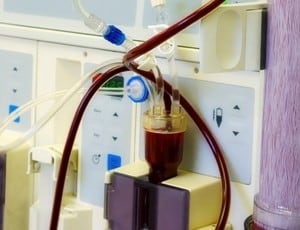
A one-sheath inverse method is useful. We hope that the technique will be more widely recognized, allowing the technique to be applied to more cases” Takashima et al (2018). Abstract: INTRODUCTION: Vascular access intervention therapy (VAIVT) is an essential interventional therapy in the field of hemodialysis therapy that allows for the long-term vascular access functionality […]
Study identifies that skin microorganism load was significantly lower at the upper arm or chest

Skin microorganisms may contribute to the development of vascular access device (VAD) infections. Baseline skin microorganism type and quantity vary between body sites, yet there is little evidence to inform choice of VAD site selection” Marsh et al (2018). Abstract: Background: Skin microorganisms may contribute to the development of vascular access device (VAD) infections. Baseline […]
Decreasing blood culture contaminants in pediatric emergency departments

Interventions that focused on improving venipuncture technique and limiting unnecessary blood cultures were associated with fewer contaminants and the achievement of the QI team’s project aims” Mullan et al (2018). Abstract: INTRODUCTION: High peripheral blood culture contamination rates (BCCR) in the emergency department (ED) contribute to overuse and harm. This study describes 2 years of […]
Risk of death after first-time blood stream infection in dialysis patients

The mortality following blood stream infection (BSI) and risk of subsequent BSI in relation to dialysis modality, vascular access, and other potential risk factors has received relatively little attention” Nelveg-Kristensen et al (2018). Abstract: BACKGROUND: The mortality following blood stream infection (BSI) and risk of subsequent BSI in relation to dialysis modality, vascular access, and […]
Central venous access catheter tunnel rupture
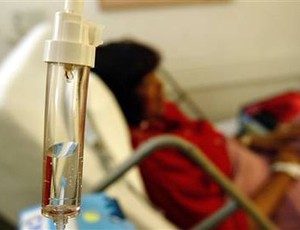
We describe two cases of an equal complication of a tunnel infection wherein the catheter becomes naked after self-rupture of the purulent secretion” Borisov et al (2018). Abstract: INTRODUCTION: Infectious complications are the most common chronic complications observed in patients undergoing hemodialysis with central venous catheters. However, despite the efforts of a large number of […]

